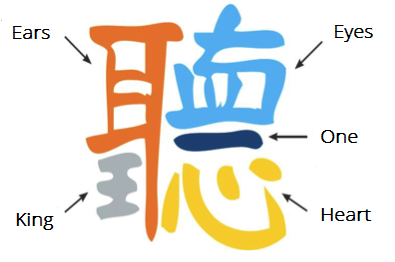Communication is a topic that comes back repeatedly with my clients. To be able to influence, to give a feedback, to align a team, to master cross-functional projects, communication is a critical skill to develop.
Communication is nevertheless a very generic term and we tend to get lost in it: how many of you have had the objective: I want to improve my communication skills or have suggested to one of your team member: I think you should investigate how you can improve your communication style.
What does it really mean to you? How would you define communication? What are you struggling with? As well as what are your current strengths? What is the purpose of improving communication? These are all questions that can help you get more specific about what you want to achieve.
Today I would like to share one specific aspect of communication: listening, or more specifically what we call active listening.
When you communicate, there is always a sender and a receiver, improving how you listen is hence as crucial as how you talk.
Living in Taiwan gave me the opportunity to get immersed in Chinese Character. Even if I must admit that my learning didn’t go very far, I remain fascinated by this language. The way characters have a history and a visual signification represents an amazing cultural richness. No surprise that I got attracted by this character: Ting – Listen.
This character reminds me continuously how I can improve my listening. It acts as an indicator of the quality of my listening.
It is the combination of 5 different characters: ears, eyes, heart, one and king.

The first three speak for themselves: you listen with your ears to hear, your eyes to see and your heart to feel.
The two latter add some nice details to the definition. First the dark blue line is: 1 – one. This can be interpreted as undivided attention or one focus. When you listen keep your full focus on your interlocutor and till the end.
Finally, the last one, in grey, is King, which also has the formal meaning of grand, great as well as best or strongest of its kind.
The whole can be read as: the best listening is the one that demonstrates unique focus and happens with ears, eyes and heart.
So next time, you want to improve your the quality of your listening, what will you do differently? What will you pay special attention to? How can you use this Chinese character to develop your communication skills?
We would love to hear your thoughts!
